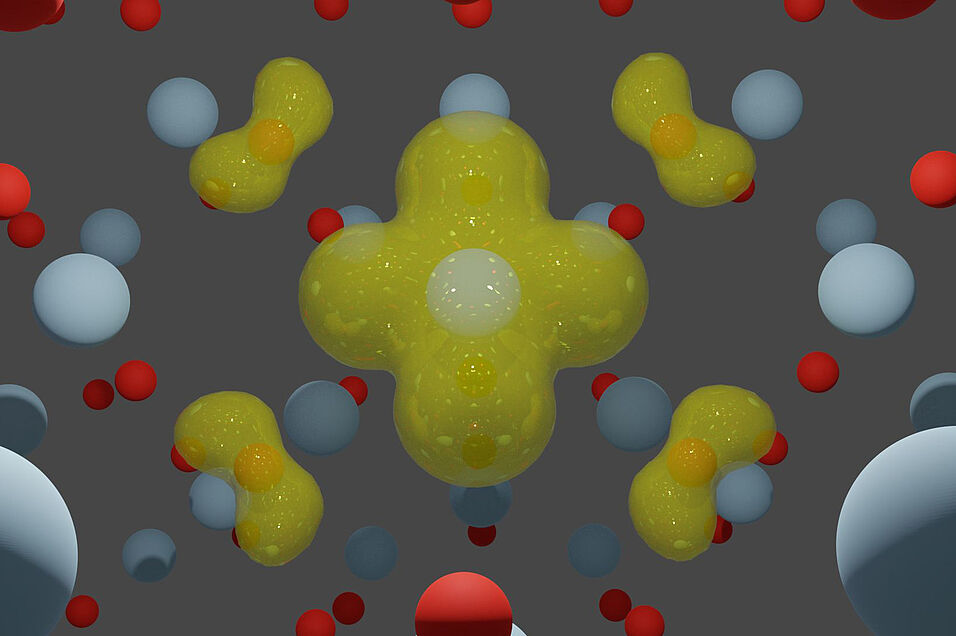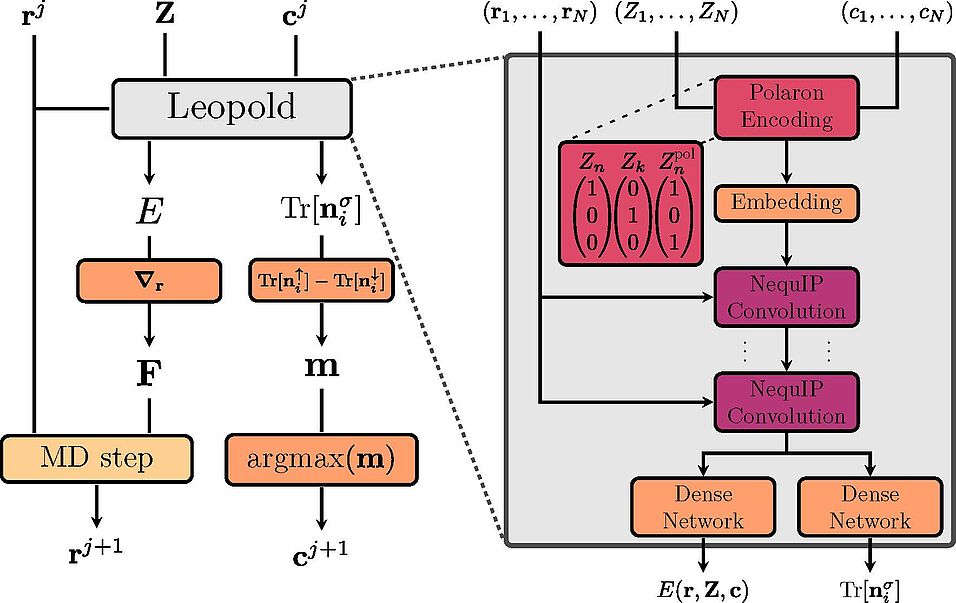In the invisible world of atoms and electrons, a fascinating phenomenon unfolds: when an electron moves through a material, it can distort the surrounding lattice of atoms, forming a coupled state known as a polaron. Though tiny, polarons have a big impact-they govern how well materials conduct electricity, how long electronic devices last, and even how efficiently solar panels convert light into energy.
Physicists from the University of Vienna led by Cesare Franchini push the frontier of understanding these elusive particles by combining the quantum precision of first-principles simulations with the speed and learning power of artificial intelligence. Using advanced machine learning-specifically, a message-passing neural network trained on quantum mechanical data-the researchers have built a tool that captures the behavior of polarons with high fidelity. The results of this research, conducted in collaboration with the University of Bologna, were published in the journal Physical Review Letters.
"This breakthrough allows us to simulate how polarons hop and move through materials over nanoseconds-orders of magnitude longer than previously possible-unlocking insights that were once out of reach due to computational limitations," explains Cesare Franchini. Viktor Birschitzky, first author of the study adds: "Building on nearly two decades of progress in integrating machine learning with molecular dynamics simulations, we have now developed a novel ML software, Leopold (Learning of polaron dynamics), capable of accurately capturing polaron charge transport."
Why does this matter? Because polaron dynamics are at the heart of some of the most pressing technological challenges of our time. From improving photocatalytic reactions that drive sustainable fuel production, to enhancing charge separation in solar cells, to understanding how lithium ions and polarons move together in next-generation batteries, and even to designing longer-lasting microelectronic devices-knowing how polarons behave can make a world of difference.
"By bringing together quantum physics, materials science, and artificial intelligence, our work shows how machine learning isn't just a computational shortcut-it's a transformative tool. One that helps us bridge the quantum and real worlds, turning deep physical insights into practical advances for energy, electronics, and beyond" concludes Luca Leoni, co-first author.
The research was funded by the Austrian Science Fund (FWF) within the SFB project TACO.
Original Publication: Viktor C. Birschitzky, Luca Leoni, Michele Reticcioli, and Cesare Franchini. Machine Learning Small Polaron Dynamics. In Phys. Rev. Lett. 134, 216301 (2025)
DOI: 10.1103/PhysRevLett.134.216301


